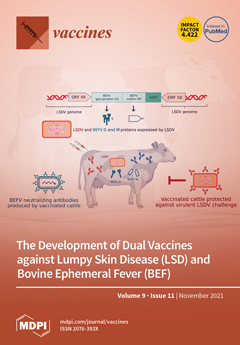Open AccessArticle
Commensal Bifidobacterium Strains Enhance the Efficacy of Neo-Epitope Based Cancer Vaccines
by
Michele Tomasi, Mattia Dalsass, Francesco Beghini, Ilaria Zanella, Elena Caproni, Laura Fantappiè, Assunta Gagliardi, Carmela Irene, Enrico König, Luca Frattini, Giulia Masetti, Samine Jessica Isaac, Federica Armanini, Fabio Cumbo, Aitor Blanco-Míguez, Alberto Grandi, Nicola Segata and Guido Grandi
Cited by 9 | Viewed by 3362
Abstract
A large body of data both in animals and humans demonstrates that the gut microbiome plays a fundamental role in cancer immunity and in determining the efficacy of cancer immunotherapy. In this work, we have investigated whether and to what extent the gut
[...] Read more.
A large body of data both in animals and humans demonstrates that the gut microbiome plays a fundamental role in cancer immunity and in determining the efficacy of cancer immunotherapy. In this work, we have investigated whether and to what extent the gut microbiome can influence the antitumor activity of neo-epitope-based cancer vaccines in a BALB/c-CT26 cancer mouse model. Similarly to that observed in the C57BL/6-B16 model,
Bifidobacterium administration per se has a beneficial effect on CT26 tumor inhibition. Furthermore, the combination of
Bifidobacterium administration and vaccination resulted in a protection which was superior to vaccination alone and to
Bifidobacterium administration alone, and correlated with an increase in the frequency of vaccine-specific T cells. The gut microbiome analysis by 16S rRNA gene sequencing and shotgun metagenomics showed that tumor challenge rapidly altered the microbiome population, with
Muribaculaceae being enriched and
Lachnospiraceae being reduced. Over time, the population of
Muribaculaceae progressively reduced while the
Lachnospiraceae population increased—a trend that appeared to be retarded by the oral administration of
Bifidobacterium. Interestingly, in some
Bacteroidales,
Prevotella and
Muribaculacee species we identified sequences highly homologous to immunogenic neo-epitopes of CT26 cells, supporting the possible role of “molecular mimicry” in anticancer immunity. Our data strengthen the importance of the microbiome in cancer immunity and suggests a microbiome-based strategy to potentiate neo-epitope-based cancer vaccines.
Full article
►▼
Show Figures






